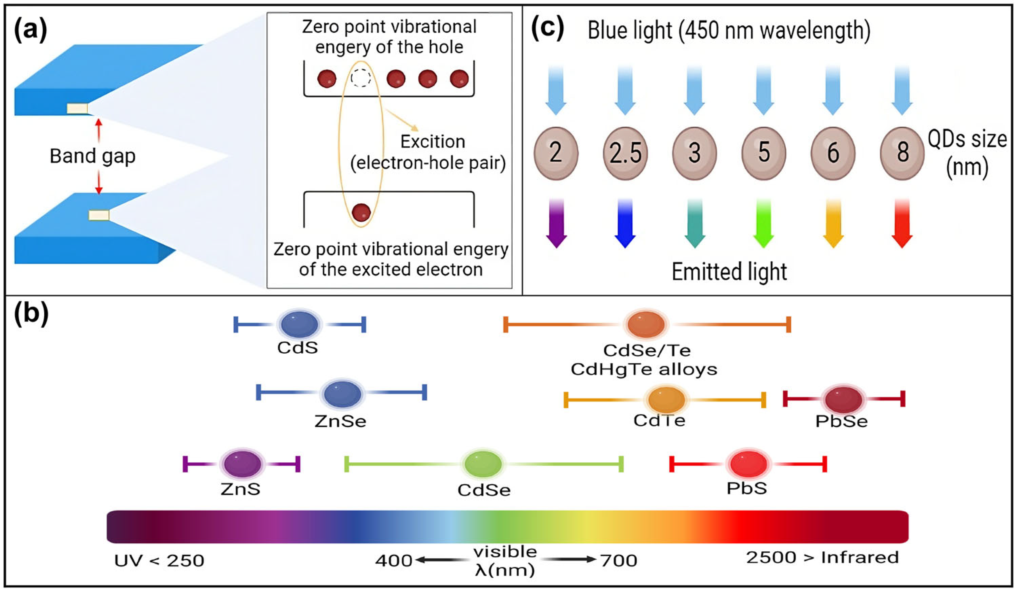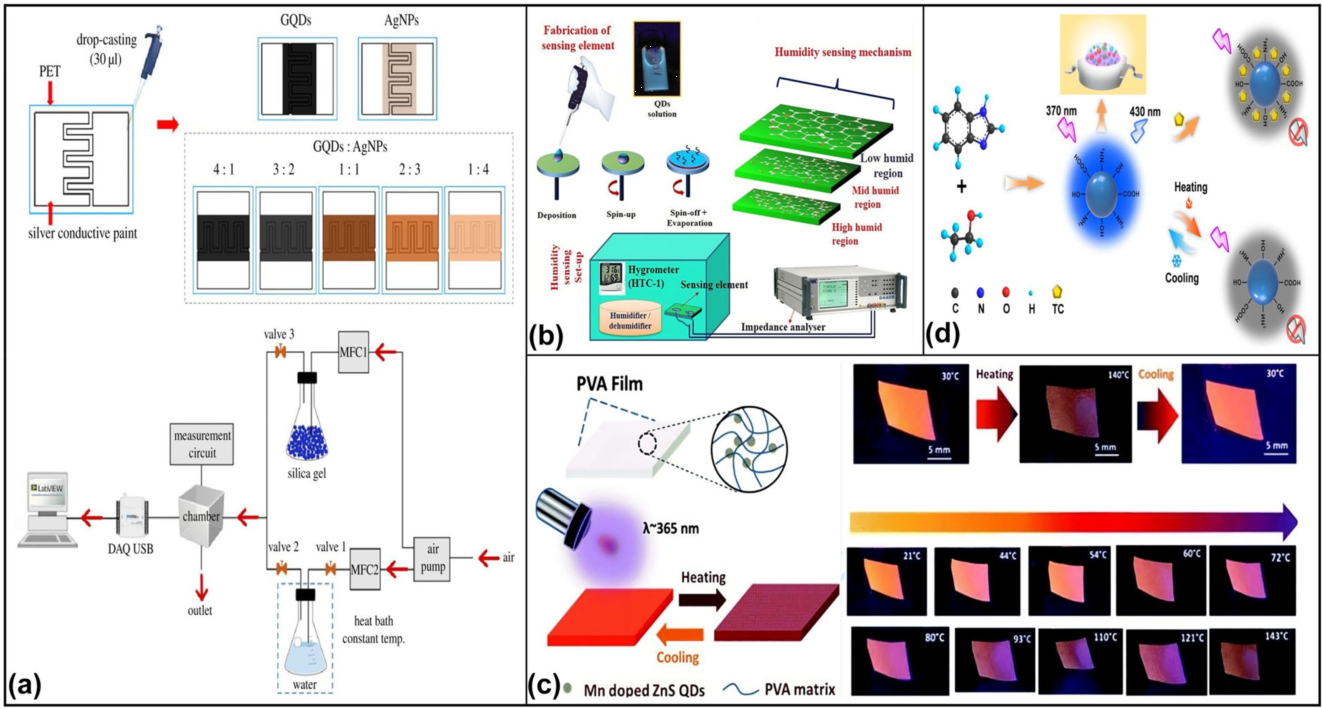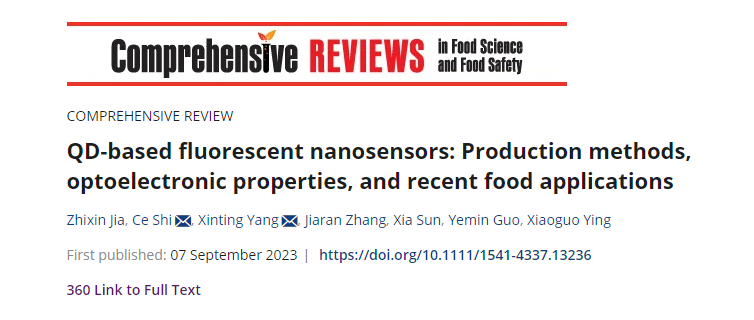Food quality and safety are important public health issues of global significance. In recent years, a series of fluorescence detection technologies have been widely used in the detection/monitoring of food quality and safety. Due to its advantages of wide detection range, high sensitivity, convenience, rapidity and specificity, quantum dot (QD)-based fluorescent nanosensors have become the first choice for Food Science and Food Safety analysis.
Recently, a research team from the Intelligent Supply Chain Department of NERCITA published "QD-based fluorescent nanosensors: Production methods, optoelectronic properties, and recent food applications" online in the international journal Comprehensive Reviews in Food Science and Food Safety (IF=14.8). The article provides ideas for optimizing sensor design to cope with the complexity of different food matrices and to accurately detect and quantify analytes in specific food matrices. By addressing the possible interferences and limitations of different food matrices, fluorescent nanosensors can be tailored to provide accurate and reliable analytical results, which are valuable for a wide range of applications in food safety, quality control, and traceability.
Zhixin Jia, a PhD student at Shandong University and NERCITA, is the first author of this paper, and Senior Engineer Zei Shi and Researcher Xinting Yang are the co-corresponding authors. This research was supported by the National Key Research and Development Program of China (2022YFD2100500), Laboratory Construction of Beijing Academy of Agricultural and Forestry Sciences (Key Laboratory of the Ministry of Agriculture) (PT2023-32), and Young Beijing Scholars Program.

Fig. 1 Different types of QD-based fluorescent nanosensors production methods: colloidal synthesis, self-assembly, plasma synthesis, viral assembly, electrochemical assembly and heavy metal-free synthesis

Fig. 2 (a) Electron-hole pairs; (b) Different band regions of the emission spectra of quantum dots (QDs) of different sizes and materials; (c) Quantum dots of different sizes absorb light of specific wavelengths and emit fluorescence of different colors.

Fig. 3 Application of QD-based fluorescent nanosensors based on detection of chemicals in foods

Fig. 4 Application of QD-based fluorescent nanosensors based on detection of biological components in foodstuffs

Fig. 5 Application of QD-based fluorescent nanosensors for temperature and humidity detection in food products.



